#other stadiums
Text
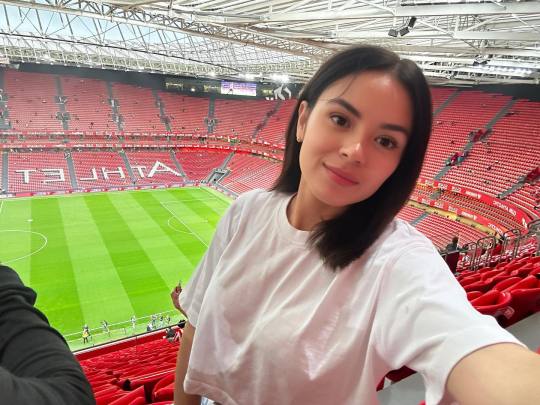
Anastasia Lunina at the San Mames during the match against Athletic Bilbao :)
12 notes
·
View notes
Text
There's a special place in hell for stadiums that don't let fans bring their own bottles of water
#there isnt always a salesperson near your section#so the only other option is going to the stadium cafeteria and getting water#just let people bring their own water#i hope that stadium gets sued
490 notes
·
View notes
Text
I finally realized what bothered me so much about what happened with VDC in Book 5.
Neige's team with RSA should have been automatically disqualified. They were given the same amount of time to prepare as any of the other schools and yet they came up with nothing. RSA was likely banking on Neige's fame to give them a win, but little to no preparation was made to actually put in a good effort. What Neige did wasn't cute. Maybe for an elementary school or early middle school it would have been fine (but then it wouldn't have been fair to pit his team against schools like NRC). Neige is a high school student, and going by the ages of the NRC students, he's at most 2-3 years younger than 18 year old Vil. RSA's team effort was lazy at best, manipulative at worst (and I don't actually think Neige was being manipulative, any of that would have come from the teachers or staff supervising the team, I think Neige really is pure of heart, dumb of ass). As a performer myself it just really infuriates me that they were even given a chance for something so ridiculous.
Can you imagine [INSERT FAMOUS 16 YEAR OLD CELEBRITY HERE] getting onstage for a televised competition with real money on the line, just to sing "Twinkle Twinkle Little Star" with other young teens doing preschool choreography? It wouldn't be cute, it would be embarrassing and unprofessional.
#like I get that's the point#but compared to what happens in snow white this is egregious#the other overblots are more comparable to the tales they're twisted from#I can sort of forgive rook for voting for his celebrity bias#but I can't forgive the entire stadium of people who also voted for rsa#absolutely embarrassing#twisted wonderland#twst#vil schoenheit#neige leblanche#vil twst#vil twisted wonderland
143 notes
·
View notes
Text
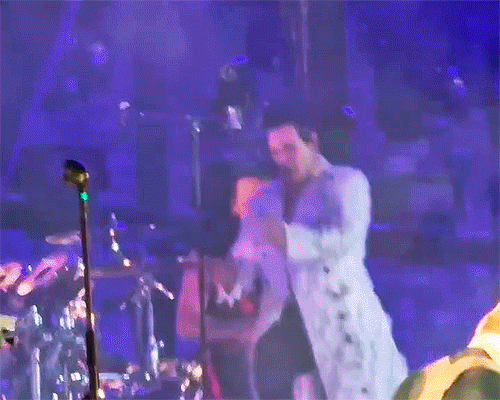


poland2 🤪
#rammstein#paul landers#richard kruspe#christoph schneider#hahaha#it looks even crazier from the other angle#😆😆😆#okay#schneider didn't kiss him :))#idiots 💖💖💖💖#still looking for du hast#ughhh#I feel like I've watched a thousand the same videos today#i have no life#stadium tour 23#my ramm gifs
274 notes
·
View notes
Text
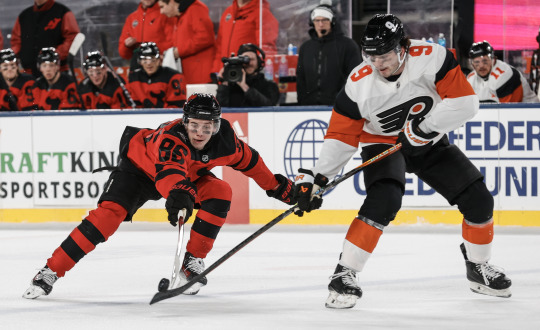
Jack Hughes (86) of the New Jersey Devils pokes the puck from Jamie Drysdale (9) of the Philadelphia Flyers during the third period the NHL Stadium Series hockey game between the New Jersey Devils and Philadelphia Flyers, outdoors, at MetLife Stadium in East Rutherford, NJ on 2/18/24
Chris Faytok | NJ Advance Media for NJ.com
#i have a feeling this will be of interest to some people#both toronto marlies as kids btw! they def know each other#jack hughes#jamie drysdale#stadium series 2024
107 notes
·
View notes
Text


Showing their love ❤️ (Budapest, Hungary, 12-07-2023) @ heatliedave (IG Story)
#the love each other#tipaul 🥰#tillchard 😍#till is love 🖤#till lindemann#paul landers#richard kruspe#rammstein#rammstein 2023#europe stadium tour 2023
188 notes
·
View notes
Text
Anytime I think about Steve, Eddie, Chrissy or Robin as famous musicians, I have to hold myself back from adding a shit ton of Lady Gaga references.
Like in the 2010s Lady Gaga appeared for an mtv music award show as this rugged, unkept greaser type character she made up named jo calderone. He's kinda known as "Lady Gaga's boyfriend that is also lady Gaga in drag". Steve Harrington, teen popstar trying to get away from his overbearing label would show up to the red carpet in drag as Amanda Miller, the girlfriend his label chose for him. She is dressed how they have their other popstar darling, Chrissy Cunningham dress. Amanda Miller later shows up in one of his music videos after he leaves the label. Both appearances of Amanda Miller cause mass bi panic online.
Speaking of fellow teen popstar Chrissy Cunningham, she starts openly thanking God and the Gays for the successes in her career. The label hates it, but they deal or else she's not gonna thank God either, causing problems with her religious fanbase(the impact of only letting her make ultra clean love songs for years). Also the idea of Chrissy disrespecting the interviewers who disrespect her is so healing. Think about it. Like yeah she ate that guy's script, and she'd do it again if he asks about her diet.
For rockstar eddie? So in Lady Gaga's song government hooker there's a spoken bit(not the jfk line the "back up and turn around" one). Those lines are spoken by Gaga's bodyguard Pete, who has a very thick Dutch accent after Lady gaga suddenly brought the idea that he be the "pervy robot voice" up during production.
Like Eddie would so do this, as I think creating songs gives him a lot of almost maniacal energy. Also for this one, the bodyguard is Italian Steve, but he's Jeff's bodyguard who Eddie's been constantly flirting with. That's perfectly fine by Eddie's actual bodyguard, who needs "a damn second to fucking breathe, you hyperactive bastard".
Indie rock vocalist Robin Buckley would have an album where she sings in like four different languages outside of English like lady Gaga did in born this way. And also sing in other languages fairly often. It's most often in French(like lady Gaga does), but every time Robin starts singing in a language that isn't English, the fans will scramble to figure out what tongue she's singing/speaking in now and what is she saying? What does google translate say she's saying?
There's paparazzi photos of vocalist Robin standing next to Jeff from Corroded Coffin but she's chatting in Italian with... his body guard? Apparently they met as teenagers on a trip abroad and became best friends then pen pals after. But we guess it evens out as robin's makeup artist/one woman glam team was best friends with Eddie in high school? And she won the prom queen tiara that CC wears in their iconic album cover. I dunno, just something that's been haunting my brain.
#yeah that last paragraph has nothing to do with lady Gaga it's just the au idea.#if anyones asking who of them wears the meat dress pls know it'd be Chrissy.#Eddie would volunteer to jump off the top of a football stadium to start a set but no one even proposed that as an idea.#Robin would also play an infinite amount of instruments at the drop of a hat but gaga is only really seen w/ pianos so it didn't fit as wel#do I think in a modern au jo calderone would be Steve's bi awakening? hell yes I do. rewatchs the yoü and I mv just for the cornfield shots#steddie#buckingham#popstar steve harrington#popstar chrissy cunningham#rockstar eddie munson#singer robin buckley#polyglot robin buckley#bodyguard steve harrington#italian steve harrington#makeup artist chrissy cunningham#i dunno what Robin and Eddie would be in the teen pop stars Steve and Chrissy au but I do know#I can't have more than 2 of them as popular musicians in the same au#I also don't know how I'd involve the party in there either. but eh I kinda like the other one more.#lady gaga#stranger things#chrissy cunningham#steve harrington#eddie munson#robin buckley#st
70 notes
·
View notes
Text
i rly do think there is a line between being critical of saudi, their involvement in football, where all the money is coming from, the millions of human rights violations that the government perpetuates and covers up via sportwashing … and then just straight up dunking on football cultures outside of europe (specifically england/germany/italy) and acting like the fans there are inferior in some way (even if they are smaller in number that does not mean that the football being played is worth any less) and implying consciously or subconsciously that the footballers who grew up in the system there don’t deserve to play football. i’ll be honest, way too many ppl cross the line.
#fine to rb#sorry but it’s actually infuriating to me especially with this henderson business how so many ppl are like#haha lol he passed up moving to a smaller pl club and now he’s playing in front of 5 fans instead of playing in front of full stadiums 🤪#like yeah he should be criticised absolutely for buying into the sportswashing and especially everything regarding lgbt ppl#but some ppl move WEIRDLY like there are other countries outside of europe that have a footballing culture or just are genuinely interested#in footy and to demean the fans and the ppl that are not involved in sportwashing is crazy to me icl#like the inherent xenophobia idgi#maybe i’m deeping it too much but i grew up watching asian football and i was frequently one of like 100 ppl in the stands#it didn’t mean any less to me. and i hate the condescending tone taken on the internet when it comes to this.#rahul.txt
39 notes
·
View notes
Text

jorts neil isnt real and cant hurt you jorts neil isnt real and cant hurt you jorts neil isnt real and
#rori this is why he's the worst of all of them btw.... no... no other reasons..... nothing else nuh uh#i actually want to study nora's brain bc this woman outright refuses to describe things that are important#to the point it's a running joke in the fandom that the apperances of each of the foxes is mainly fanon#bc there was so little detail given that no one can actually confirm or deny physical hcs#yet nora is willing to spend two pages painstakingly telling me every step neil takes inside the stadium#and every part of his uniform change. like it's not even interesting or important why are we doing this#literally 'he took his shirt off. he put his socks on. he swapped casual shoes for exy shoes. he-' I DONT CARE#'Can you crash already?' NEIL DSKHDGKSH#OMG THE VIXENS ARE HERE HIII KATELYN!!!! has anyone checked on aaron yet. has he got a pulse#'Maybe he's afraid she'll die on him like the last woman he really loved' ANDREW JOSEPH MINYARD#ooooooooh i love reading the games i get so stressed out and for what. this makes me wish id done sports at school. a distressing thought#aftg#hella reads aftg
106 notes
·
View notes
Text
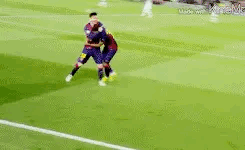
I still think about this angle a lot cause. Where the hell was the rest of the team? Not a single other player in sight.
#I feel like I could write a whole essay about this but that’s just crazy#it’s like it’s just the two of them??#where are the other 80000 people in the stadium#neymar#neymar jr#leo messi#lionel messi#neymessi
118 notes
·
View notes
Photo

Mina Bonino at the Stamford Bridge during the match against Chelsea F.C. :)
12 notes
·
View notes
Text
i have got to stop trusting regular old youtubers with pokemon glitch coverage i can't keep doing this to myself i just can't
#soda offers you a can#you choose to talk about glitch city as the wildest gen1 glitch when there's arbitrary code execution you can take into other gameboy games#and maybe even to pokemon stadium#losing my mind crawling on the ceiling it's lords year of 2023 and you think glitch city is as wild as it gets ???#they didn't even talk about glitzer popping smh
28 notes
·
View notes
Text
when a stadium in daniel's hometown shows more support for daniel than mclaren

#daniel ricciardo#f1#mclaren#australia#formula 1#no one talk to me im crying#optus stadium has rights#every other aussie state is slacking light up ur landmarks for daniel cowards#azerbaijan gp 2022#baku gp 2022
438 notes
·
View notes
Text

this is so funny 😆 (x)
#rammstein#paul landers#richard kruspe#paulchard#till at the background 😆#i actually hope he will leave them alone 😅#and let them kiss each other whenever they want#stadium tour 23
285 notes
·
View notes
Text



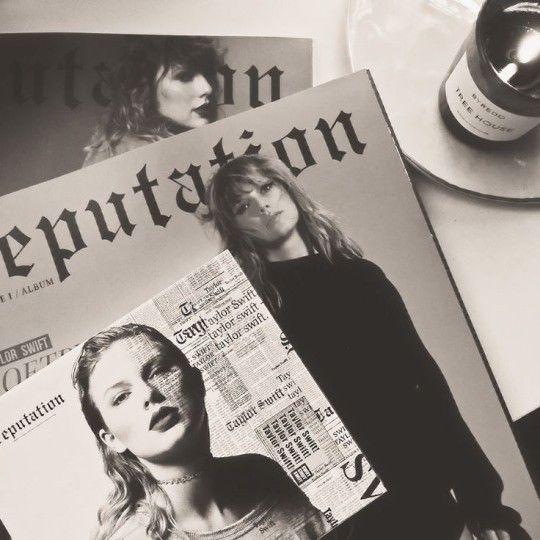
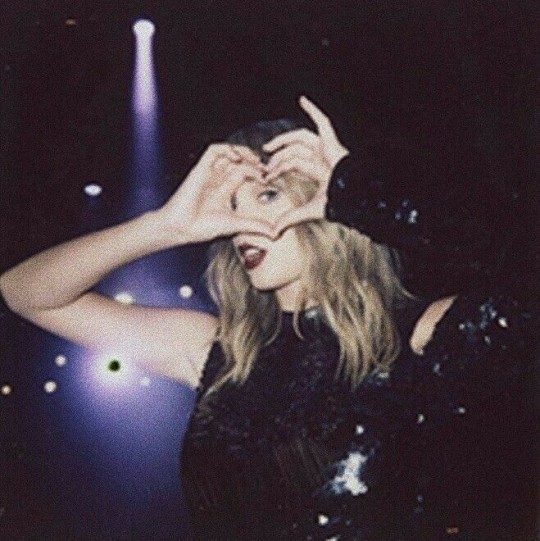
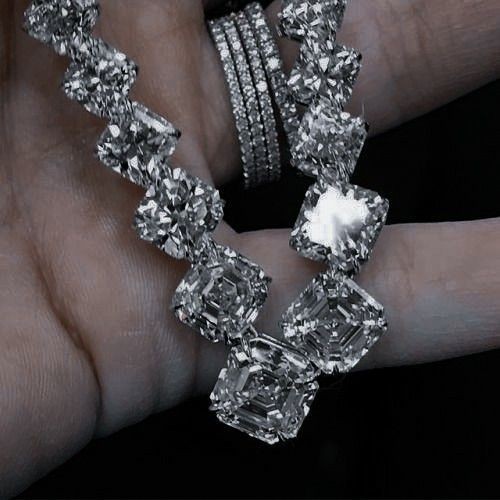



all i think about is karma
#reputation Taylor my beloved#Taylor please rerecord reputation so that I can buy and not give money to any other person challenge#BIG REPUTATION#OOOOH YOU AND ME WE GOT BIG REPUTATIONS AAAAAHHH#taylor swift#taylornation#reputation#call it what you want#reputation stadium tour#reputation taylor’s version#swifties#messy moodboard
379 notes
·
View notes
Text
On August 6th, 1936, Josep Sunyol made a mistake that cost him his life. The Republican president of FC Barcelona, a proud Catalan, was executed by Nationalist forces in the midst of the Spanish Civil War, after saluting troops he mistakenly identified as part of the Republican resistance by yelling, “Viva la República,” (Camino, 2014). The assassination of Sunyol symbolized the beginning of an oppressive era where regional cultures were restrained in Spain, particularly the autonomous community of Catalonia. The most publicly admired and respected representation of Catalanism, Futbol Club Barcelona, colloquially known as Barça, faced countless hardships during the fascist dictatorship of Francisco Franco from 1939 to 1975. The club rapidly became one of the only ways the Catalan people could freely express themselves and fight against Franco, especially by playing the team that became the face of the regime, Real Madrid. In the present day, Barça continues to symbolize hope and freedom for Catalonians. Amid the rise of Francoist Spain in the mid-1900s, escalating tensions between Catalan club FC Barcelona and centralist Real Madrid transformed their rivalry into a political product representing the struggles of the Catalan people, illustrating how football transcends the limits of sport to reach social and political issues, particularly through the ambience of stadiums.
Throughout Spain, football stadiums became an essential place of solace for oppressed fans, where they were free to speak out on the issues that plagued their lives. People could openly express their identities in the stands, as matches between teams of different regions often represented a conflict larger than the game itself. One example of Catalonians using football for this purpose dates back to the pre-Franco era, when “the Spanish national anthem was played to a chorus of boos before a match at Les Corts, FC Barcelona’s stadium in 1925” (O’Brien, 2013). Even prior to Catalonians being officially repressed under Franco, it was clear that they valued their regional identity more strongly than their national one.
As the dictatorship grew stronger, regional teams like FC Barcelona faced the brunt of the nationalist policies. In promoting a unified Spain, the regime heavily cracked down on aspects of localized culture. The Catalan language, in all forms, was banned in public, and only Castilian Spanish was permitted (Shobe, 2008). An order passed in 1941 required that the Catalan name of “Futbol Club Barcelona” be renamed to the Spanish “Club de Fútbol de Barcelona” (Kassimeris, 2012). The Catalan senyera flag was also banned, and so the senyera in FC Barcelona’s coat of arms was replaced with the newly created flag representing the fascist state (Shobe 2008). Under the severe Castilization of their environment, the people of Catalonia were being stripped of their identities right in front of their eyes. With essentially no power, the Catalan people “threw their cultural pride into Barça. At a Barça match, people could shout in Catalan and sing traditional songs when they could do it nowhere else” (Shobe, 2008). Inside the stadium was where it was openly acceptable to oppose the restrictions of the regime and where liberation felt most realistic.
On the other side of the country, Real Madrid was thriving as the favorite club of the regime. Franco believed the Spanish national team was not gaining enough traction internationally, as they did not qualify for the World Cup multiple times in a row and performed poorly the years they did. Fortunately for him, “the image of the Spanish national team was blurred by the prevalence and success of Real Madrid in European Football from 1956,” effectively thrusting the club into the international spotlight (Goig, 2007). Real Madrid won five consecutive European Cups from 1956 to 1960, and their recognition both in and out of Spain surged with each victory (Quiroga, 2015). The relationship between the team and the regime was undoubtedly symbiotic. Real Madrid portrayed a positive image of the dictatorship to international audiences, while Franco gave them his full-fledged support and funds. In the 1960s, as television ownership grew across the country, Real Madrid was the most broadcasted team (O’Brien, 2013). The increased public exposure to the club acted as justification for the actions of the fascist regime, because people started paying more attention to football than to the government. Supporters of Real Madrid, known as madridistas, had no idea what was happening politically behind closed doors, nor did they seem to care.
The matches between FC Barcelona and Real Madrid, termed el clásico, were expectedly controversial. Spanish media outlets moved quickly to polarize the two sides, with newly-created “Marca” pushing for Real Madrid and the dictatorship, while “El Mundo Deportivo” supported FC Barcelona and ultimately the oppressed people of Catalonia (O’Brien, 2013). The politicization of the sporting rivals is seen best in a famed clásico played in June 1943, the second leg of a knockout round in the Spanish Cup. FC Barcelona had won the first game 3-0 and were on track to advance to the next round, until police officials entered the Catalan locker room before the game. Flash forward a few hours, and Real Madrid won the game with a score of 11 to 1 (Shobe, 2008). The interference by the Francoist police no doubt played a significant role in Barça losing so severely. While it is not known what exactly was told to the Barcelona players in the locker room, it can be inferred that they were threatened to purposefully lose the game, otherwise, they could lose their lives.
As the dictator fell ill, FC Barcelona worked to reverse the impacts of his policies and reclaim their Catalan identity. During the 1973-1974 season, they shed the Spanish name of “Club de Fútbol de Barcelona” and went back to the Catalan version it currently holds (Shobe, 2008). Additionally, in 1975, the club switched the official language back to Catalan, thus once again proudly representing the people of Catalonia (Quiroga, 2015). After Franco’s death, the effects of the regime collapsing were felt immediately in stadiums across the country. One clásico played just a month after Franco’s death in 1975 experienced the largest public emergence of senyera flags since the Civil War, and in Basque Country, a similarly tyrannized region of Spain, a game between two local teams “witnessed the spectacle of both captains carrying the Basque flag on to the pitch before the game” in early 1976 (O’Brien, 2013). Events that would have been inconceivable just months earlier were now reality, as stadiums reflected the transition back to a more accepting nation.
These bold representations of cultural unity at football games did not cease in the years after Franco. In fact, they have grown stronger in the 21st century. In the 2009 Spanish Cup final between Basque side Athletic Club de Bilbao and FC Barcelona, the crowd vehemently booed King Juan Carlos I and the Spanish national anthem before kickoff (Ortega, 2015). Decades later, supporters have not forgotten the unjust treatment they were put through and are still vocal about it during matches. A fan of Celta de Vigo, situated in once-repressed Galicia, proclaimed that “On going to a match we never forget Galician prisoners, repression, the secular subjection of Galicia... Spain limits the ways in which we can fight, so football is a way of voicing our demands” (Spaaij & Viñas, 2013). While fans of teams in marginalized regions use every opportunity they can to bring light to the maltreatment and discrimination of their pasts, for the most part, Real Madrid supporters do not follow the same path. In 2010, when Real Madrid beat FC Barcelona 1-0 in the Spanish Cup final, a large group of madridistas gathered in downtown Madrid, carrying Spanish flags while cheering “I’m a Spaniard, Spaniard, Spaniard” (Ortega, 2015). It is incredibly telling that in choosing to reaffirm their national identity rather than regional, madridistas see themselves as representing the entire country. As Franco’s Spanish Nationalist movement saw its triumph over Republican forces as a victory for Spain, madridistas still see a Real Madrid victory over a formerly oppressed team as a win for the whole nation.
In 2017, Catalonia became the forefront of global news as violence broke out amidst an independence referendum. On October 1st, the autonomous community conducted a vote regarding whether Catalonia should declare independence from the Kingdom of Spain, and the regional government announced that out of 2.25 million votes, about 90% were in favor of separating (Dewan, Clarke, & Cotovio, 2017). Unfortunately, the vote was heavily obstructed by the Madrid government. National forces were sent in from the capital, “fir[ing] rubber bullets at protesters and voters trying to take part in the referendum, and us[ing] batons to beat them back,” injuring around 900 people (Dewan et al., 2017). Predictably, FC Barcelona is often utilized to discuss and promote Catalonian independence, such as in 2010 when a banner declaring that “Catalonia is not Spain” was displayed during a game against English club Arsenal (O’Brien, 2013). When the central government began plans to thwart voting earlier in September of 2017, Barça decided to speak out. The club released a statement on Twitter, expressing that “FC Barcelona...remain[s] faithful to its historic commitment to the defense of the nation, to democracy, to freedom of speech, and to self-determination...FC Barcelona...will continue to support the will of the majority of Catalan people” (FC Barcelona, 2017). In openly showing support towards Catalan citizens’ voting rights and the independence referendum, Barça effectively bridges the gap between sports and politics. This is a two-way street: FC Barcelona stands up for their adherents, just as fans turn to the club to escape injustice time and time again. Coincidentally, Barça had a game scheduled the same day as the vote, which was played behind closed doors in order to eliminate the possibility of violence erupting in the crowd. The opposing team, Las Palmas, wore “special uniforms emblazoned with the Spanish flag,” something very out of the ordinary (Minder & Barry, 2017). Such a display could not tell a more pointed message.
The Franco dictatorship shaped the future of Spanish football forever, with Real Madrid and FC Barcelona at the forefront of the action. Real Madrid’s consistent success found them gaining the trust of the regime, which showcased the club’s victories as a positive interpretation of the fascist dictatorship itself. The desire of a unified, homogeneous Spanish state fueled regional tension, especially in Catalonia. Despite having their language and flag taken away, the Catalan people sought comfort in the stadium of FC Barcelona, where they could freely sing and speak and cheer for their team. In the decades after Franco, FC Barcelona has captivated audiences across Spain and the globe, cementing the club’s status as the most powerful cultural institution of Catalonia. “When the team took the field against FC Valencia in February 2012, nine players from the starting 11 emerged from the club’s Cantera System” (O’Brien, 2013), illustrating the importance Barça places on homegrown players. By providing unmatched talent bred exclusively in the club’s own youth academy, FC Barcelona is ensuring that they are conveying the best image of Catalanism to the rest of the world. As the Catalan struggle for independence continues, Barça was, is, and will continue to be a significant characteristic of the identities of millions of Catalonians. FC Barcelona represented hope in a time where its people needed it the most, and it is still the most influential institution in Catalonia to this day. The club and region are inextricably intertwined, as best seen in the passionate cheer: “Visca el Barça i visca Catalunya” - long live FC Barcelona and long live Catalonia.
References
Camino, M. (2014). ‘Red Fury’: Historical memory and Spanish football. Memory Studies,7(4), 500-512. doi:10.1177/1750698014531594
Dewan, A., Clarke, H., & Cotovio, V. (2017, October 02). Catalonia referendum: What just happened? CNN. Retrieved from https://www.cnn.com/2017/10/02/europe/catalonia- independence-referendum-explainer/index.html
Goig, R. L. (2007). Identity, nation‐state and football in Spain. the evolution of nationalist feelings in Spanish Football. Soccer & Society,9(1), 56-63. doi:10.1080/14660970701616738
FC Barcelona, @FCBarcelona. (20 September, 2017). Communique - Attached Image. [Twitter post]. Retrived from https://twitter.com/FCBarcelona/status/910462298908708864
Kassimeris, C. (2012). Franco, the popular game and ethnocentric conduct in modern Spanish football. Soccer & Society,13(4), 555-569. doi:10.1080/14660970.2012.677228
Minder, R., & Barry, E. (2017, October 01). Catalonia's Independence Vote Descends Into Chaos and Clashes. The New York Times. Retrieved from https://www.nytimes.com/2017/10/01/ world/europe/catalonia-independence-referendum.html
O’Brien, J. (2013). ‘El Clasico’ and the demise of tradition in Spanish club football: Perspectives on shifting patterns of cultural identity. Ethnicity and Race in Association Football, 25-40. doi:10.4324/9781315094304-3
Ortega, V. R. (2015). Soccer, nationalism and the media in contemporary Spanish society: La Roja, Real Madrid & FC Barcelona. Soccer & Society,17(4), 628-643. doi:10.1080/14660970.2015.1067793
Quiroga, A. (2015). Spanish Fury: Football and National Identities under Franco. European History Quarterly,45(3), 506-529. doi:10.1177/0265691415587686
Shobe, H. (2008). Place, identity and football: Catalonia, Catalanisme and Football Club Barcelona, 1899–1975. National Identities, 10(3), 329-343. doi:10.1080/14608940802249965
Spaaij, R., & Viñas, C. (2013). Political ideology and activism in football fan culture in Spain: A view from the far left. Soccer & Society, 14(2), 183-200. doi:10.1080/14660970.2013.776467
#just in case anyone forgot :)#fc barcelona#fcb#football#this is just one of my two or three essays on this topic lmfao#i think this is my most recent one from 2018 for my social and historical perspectives of sport class in 2nd year of undergrad#i miss when i used to fight people on here by just copy pasting paragraphs of this and the other papers. lol#that whole point about stadiums isn't really relevant to this particular incident/conversation (i think) and tbh idk why i included it#maybe one of the papers had some really good info about it that i couldn't ignore
74 notes
·
View notes